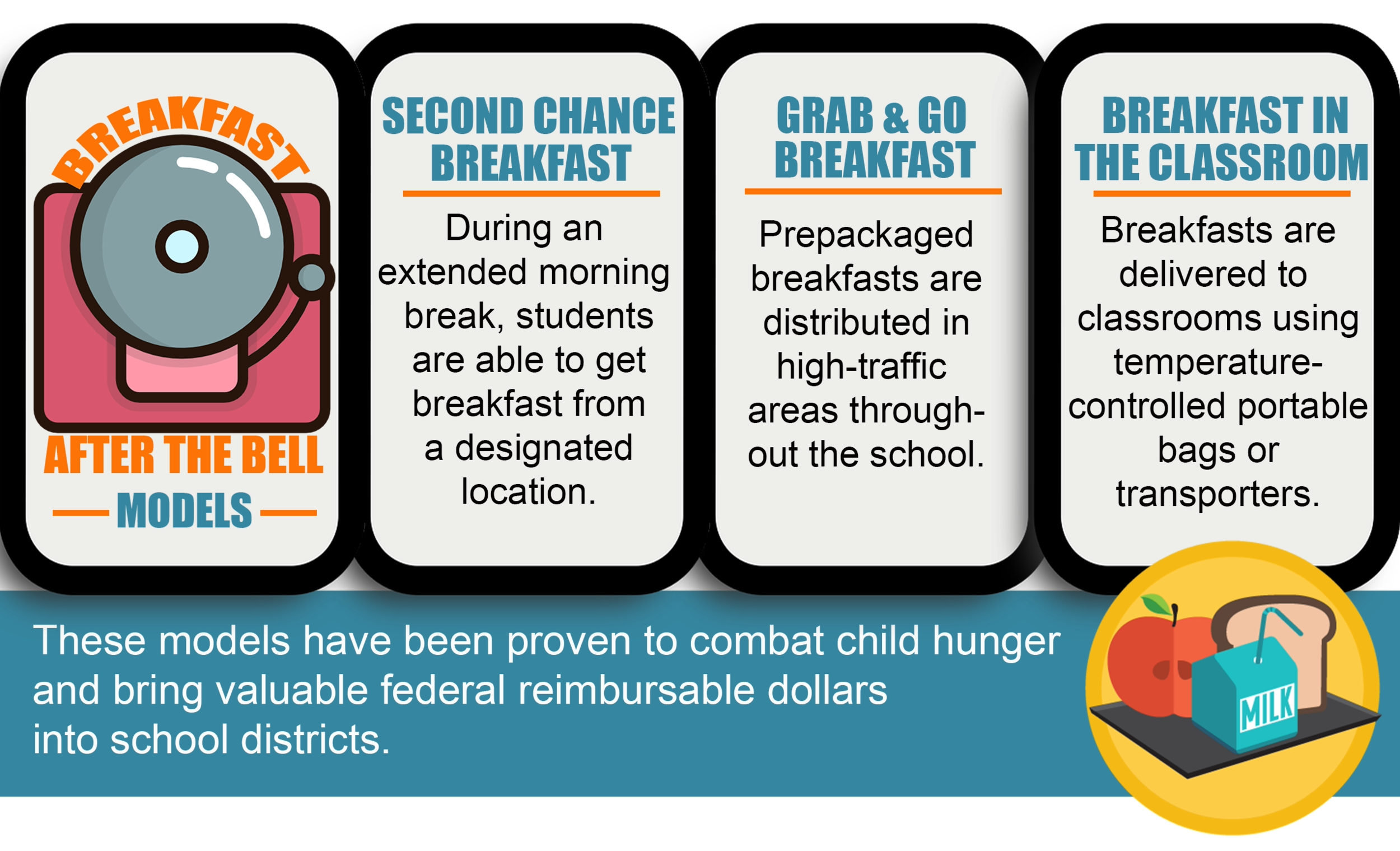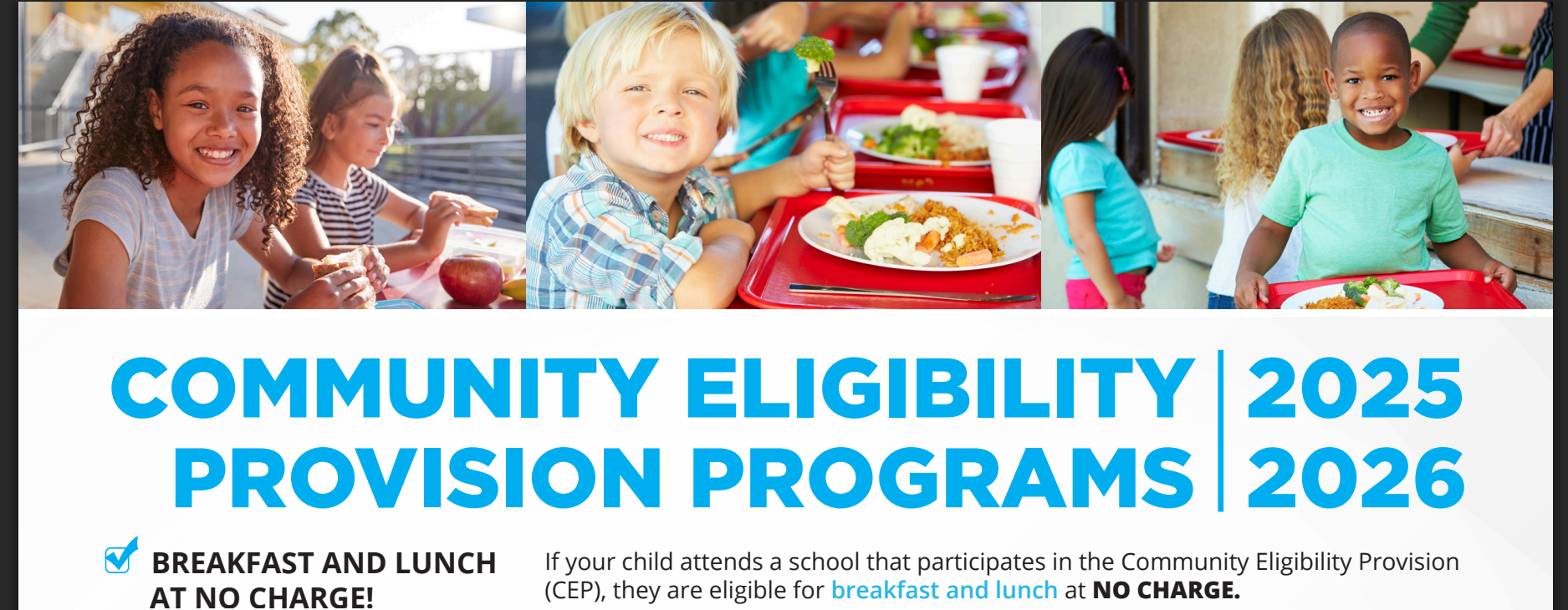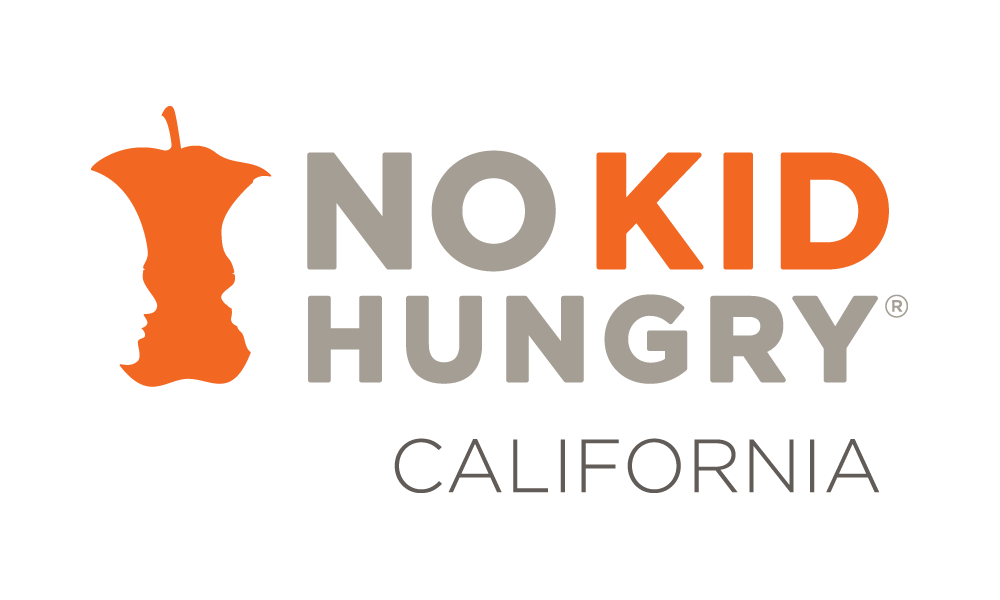
As summer ends and a new school year begins, we acknowledge the hard work of summer meal sponsors and advocates to bridge the gap to keep children healthy, connected, and ready to learn. Just last summer in 2024, summer meal sponsors served millions of meals to children across the country – a powerful illustration of the impactful work of community organizations.
Breakfast After the Bell
When school is back in session, school meal programs pick up the baton. School breakfast and lunch help students stay nourished and ready to succeed in the classroom. Breakfast, in particular, is linked to better test scores, improved behavior, higher attendance, and overall health. Strategies like Breakfast After the Bell make it easier for more students to participate. Learn more about Breakfast After the Bell from No Kid Hungry’s Center for Best Practices.

Source: San Diego Hunger Coalition
Community Eligibility Provision (CEP)
CEP allows eligible schools to offer free breakfast and lunch to all students regardless of income — no applications required. CEP reduces administrative burden, eliminates stigma, increases participation in school meals, and supports a whole child approach to learning. When children are well nourished, they are more focused, attend more regularly, and experience fewer behavioral issues.
CEP supports all students by eliminating out-of-pocket food costs for families and making school meals universally accessible. By removing the need for meal applications and tracking unpaid meal charges, school nutrition teams can streamline operations and implement innovative service models, like meals in the classroom. These benefits often lead to stronger financial outcomes for school meal programs, thanks to increased participation and more efficient service delivery.
Under CEP, schools receive funding based on a formula using data from programs such as the Supplemental Nutrition Assistance Program (SNAP) and Temporary Assistance for Needy Families (TANF) – meaning families no longer have to submit income applications. Thanks to federal rule changes in 2023, the eligibility threshold for CEP was lowered from 40% to 25% of students directly certified for free meals. This change has opened the door for many more schools to participate. Key benefits include:
- High-participation schools can support lower-percentage schools through group applications, or multiple schools applying in one application.
- Once a school opts in, the identified student percentage (ISP) rate is locked in for five years. The ISP is calculated by dividing the total number of identified students by the total number of enrolled students.
- No child is ever charged for meals, and no parent has to complete a meal application.
While school lunch participation is often strong, school breakfast participation tends to lag behind – presenting a great opportunity for growth. Increasing breakfast participation can significantly boost your CEP program’s financial sustainability, since more meals served equals more reimbursements.
If your school has adopted CEP and is feeling a budget pinch, consider focusing on breakfast outreach. Use tools like social media, newsletters, and school websites to promote key messages, such as, “School meals are free for all students – breakfast included!” When families understand the benefits, participation rises.

Source: Dekalb County Schools in Georgia
Learn more about the Community Eligibility Provision by visiting the CEP webpage on No Kid Hungry’s Center for Best Practices. Have a question or require some assistance, please reach out to us at nokidhungryca[at]strength.org.
By aligning summer and school meals, communities can create a seamless, year-round nutrition system that supports every child’s health, development, and academic success.
Last update: August 20, 2025



